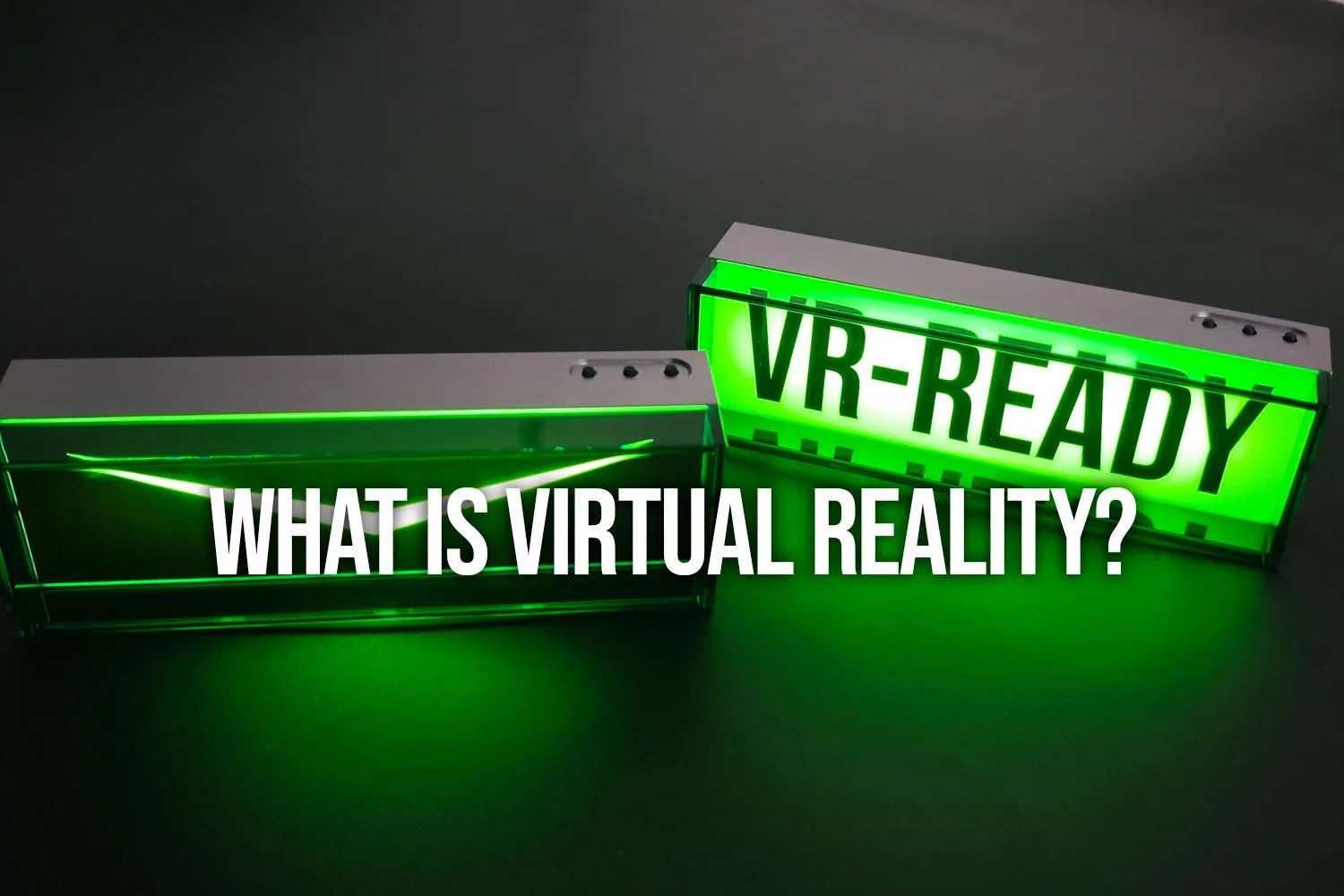In recent years, Virtual Reality (VR) has emerged as a transformative technology, reshaping how we interact with digital environments and offering immersive experiences that transcend the boundaries of the physical world. But what exactly is VR, and how does it work? Let's delve into this groundbreaking technology.
Understanding Virtual Reality
What is VR?
At its core, Virtual Reality refers to a computer-generated simulation of an environment that allows users to interact and immerse themselves in a seemingly real or artificial world. It encompasses a combination of hardware, software, and sensory interfaces that create a sense of presence and immersion, enabling users to perceive and interact with a computer-generated environment as if they were physically present within it.
This isn't just something from recent years. In our article "The History of VR" we go over the advancements in VR in the last decades. Virtual Reality as a term was coined in the 80s.
How Does VR Work?
- Hardware: VR hardware typically includes a headset or goggles that users wear to view the virtual environment. These headsets contain high-resolution displays that present the computer-generated imagery to the user's eyes, creating a 3D visual experience.
- Sensors and Tracking: Sensors within the headset track the user's head movements, allowing the VR system to adjust the visuals in real-time, giving the illusion of looking around and exploring a virtual space.
- Input Devices: Controllers or hand-tracking devices enable users to interact with and manipulate objects within the virtual environment, providing a sense of presence and agency.
- Immersive Audio: High-quality spatial audio enhances the immersive experience by creating realistic sounds that correspond to the user's movements and interactions within the virtual world.
Types of VR
- Mobile VR: Utilizes smartphones inserted into VR headsets to provide VR experiences, usually with limited processing power and capabilities compared to dedicated VR systems.
- Tethered VR: Requires a connection to a powerful computer or gaming console, offering high-quality graphics and immersive experiences with the use of advanced headsets like Oculus Rift, HTC Vive, PlayStation VR, and the Pimax Crystal.
- Standalone VR: All-in-one devices that incorporate computing power within the headset itself, eliminating the need for external connections.
Read also:
- PCVR vs Standalone VR
Applications of VR
Entertainment and Gaming
VR has revolutionized the gaming industry by offering unparalleled immersion, allowing gamers to step into their favorite virtual worlds and interact with environments and characters like never before.
Read also:
Education and Training
In fields such as medicine, aviation, and education, VR provides realistic simulations for training purposes, allowing users to practice skills and scenarios in a safe and controlled environment.
Healthcare and Therapy
Virtual Reality is increasingly used in therapeutic settings to treat phobias, PTSD, anxiety disorders, and pain management, offering immersive environments for exposure therapy and relaxation techniques.
Architectural Visualization and Design
Architects and designers use VR to create and explore 3D models of buildings and spaces, enabling clients to experience and visualize designs before they're built.
Social Interaction and Communication
VR facilitates social experiences by connecting people from around the world in virtual spaces, enabling real-time interactions, meetings, and events.
Movies
Watching movies and other types of entertainment is a popular use-case of VR as well. In two articles we go over what are the best VR headsets for watching movies, and the best VR movies.
The Future of VR
As technology advances, the future of VR looks promising. Innovations in haptic feedback, eye-tracking, and increased realism in graphics promise to further enhance the immersive experience. Additionally, the integration of VR with other technologies like Augmented Reality (AR) and Mixed Reality (MR) is likely to expand the possibilities and applications of immersive technologies.
In conclusion, Virtual Reality is not just a technology; it's an immersive gateway to new experiences and possibilities. As it continues to evolve and find its footing in various industries, the potential for VR to shape the future of entertainment, education, healthcare, and beyond is vast. Embracing VR means stepping into a world where imagination meets innovation, where the boundaries of reality are redefined, offering limitless opportunities for exploration and discovery.
VR terms to help you understand better what is VR
- VR Headset: A device worn on the head that displays a virtual environment to the user. Examples include Oculus Rift, HTC Vive, and PlayStation VR.
- Haptic Feedback: The sense of touch in VR, providing vibrations or sensations to simulate tactile experiences, enhancing immersion.
- Room-scale VR: Refers to VR experiences that allow users to physically move within a defined space while wearing a headset, enabling more immersive interactions.
- 360-Degree Video: Video content that captures a view in all directions, allowing users to look around and feel like they're present in that environment.
- Latency: The delay between a user's action and the system's response. Low latency is crucial in VR to prevent motion sickness and maintain immersion.
- Presence: The feeling of being physically present in the virtual environment, achieved through realistic graphics, sound, and interaction.
- Field of View (FoV): The extent of the observable environment at any given moment through the VR headset. A wider FoV enhances immersion.
- Motion Tracking: The technology that follows the user's movements in physical space and replicates them in the virtual environment, enhancing realism.
- Teleportation: A locomotion technique in VR where users instantly move from one place to another within the virtual space, reducing motion sickness.
- VR Content Creation: The process of developing or producing VR experiences, involving 3D modeling, animation, and coding to build immersive environments.
- Simulator Sickness: Similar to motion sickness, it's discomfort or nausea experienced by some users due to discrepancies between virtual and physical movements.
- Augmented Reality (AR): While not strictly VR, AR overlays digital content onto the real world, blending the virtual and physical environments.
These terms encompass various aspects of VR technology, contributing to the overall immersive experience for users.








